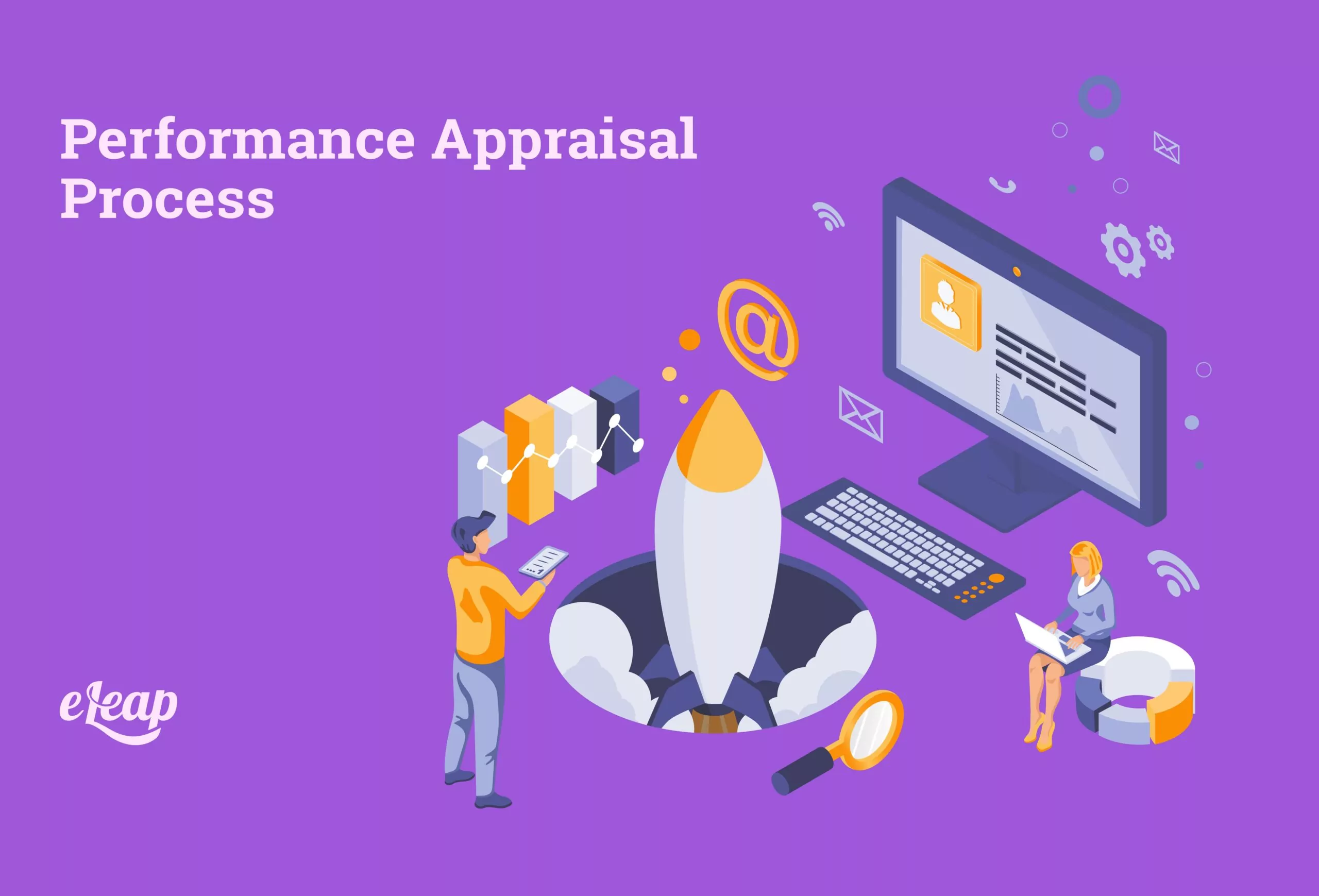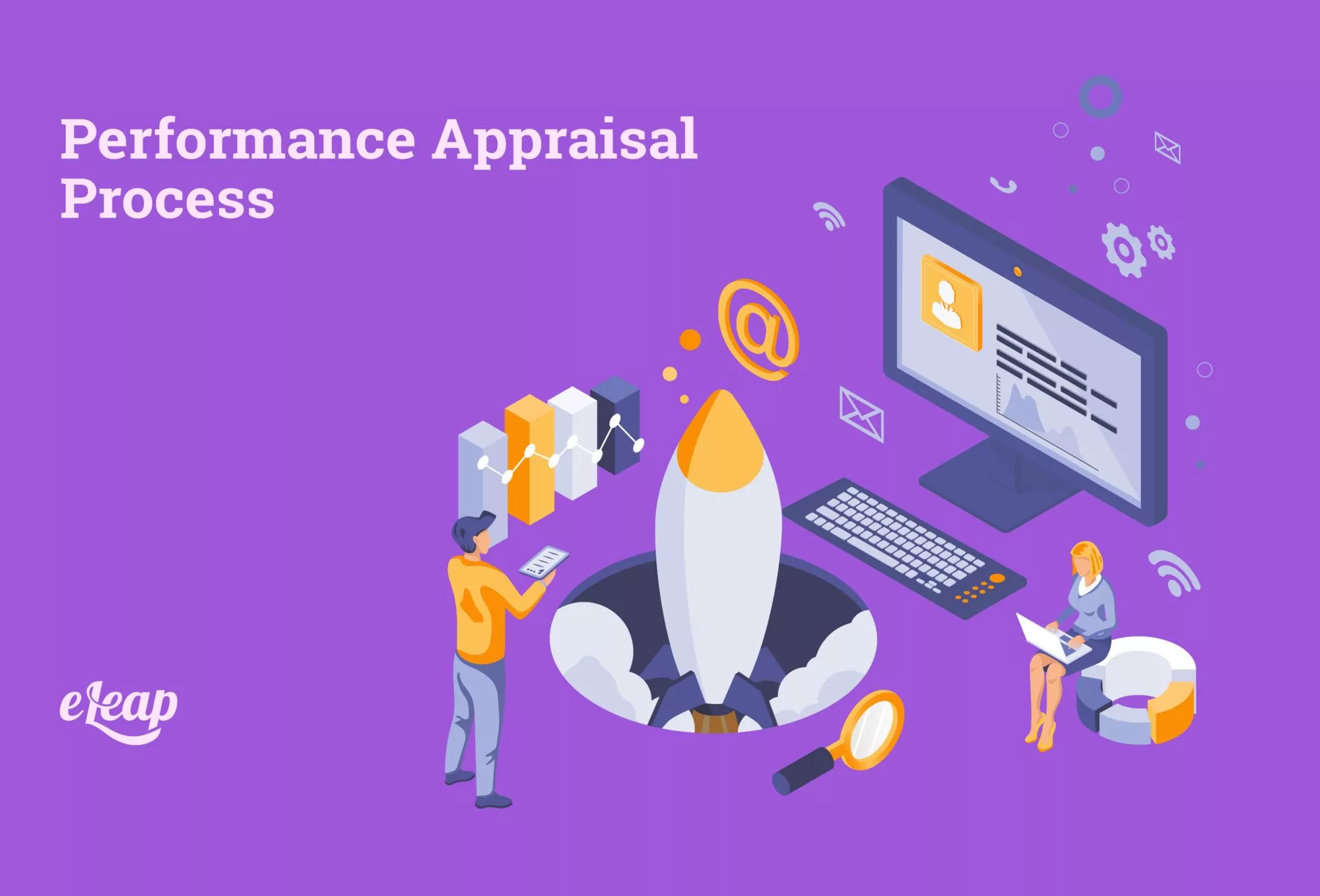Performance Appraisal Process
A Step-By-Step Walkthrough of How to Run a Performance Appraisal

Let’s say you’ve just been hired to turn around a failing business. It’s been slipping into the red for the past couple of years, and if it can’t turn a profit in the coming quarters, everyone could be out of a job. What’s the first thing you’re going to do? If you aren’t thinking of conducting a performance appraisal, you might be part of the problem, not the solution. The performance appraisal process can play a crucial role in pinpointing weaknesses, resolving them, and motivating employees to work at their most productive. Explore how eLeaP’s Performance Management Platform can simplify evaluations, boost productivity, and drive measurable results.
You can also download the ebook “The Skeptics Guide to Performance Management“ and get started on improving your performance management process.

This works through a two-pronged attack—evaluation and feedback. Pour through the business’s work history, find where it needs improvement, and set the appropriate goals to overcome those setbacks. But also celebrate and reinforce the areas where employees have succeeded. The point is to redirect away from bad habits and strengthen good habits.
If you’re new to conducting performance appraisals, you may be unsure of the total process. If so, we recommend that you keep reading to get a working knowledge of how performance appraisals are run. We’ll break it down step-by-step so you can head back into the office with the tools and information needed to set the business back on track.
Preparing for the Appraisal
The first thing you’ll want to do is inform the general staff that you will be conducting performance appraisals and that they will soon get a performance plan from HR. Once they have received the performance plan, they should complete their self-evaluation plan and turn it in either to their supervisor or to human resources. Providing these through an online platform simplifies the process through automation.
After all, self-evaluations have been collected, send out memos notifying employees which areas of their performance plans will be addressed in the performance appraisal. From here, you should begin collecting all necessary documentation from the employees. Consider collecting performance notes, recommendations, customer approvals, relevant minutes from meetings, or any possible probations or warnings. You will want to build a cohesive background for the employee that covers their successes and their weaknesses.
Also, gather and review notes and goals set in the employees’ previous performance appraisals. You will need to assess how the employee has grown since their last appraisal and gauge whether they have sufficiently met their goals. Compare the employees’ self-appraisals to the goals set in their previous
Once you have collected all of the appropriate documentation, prepare each appraisal sheet for each employee. We recommend having human resources develop a template with which you can just fill in the appropriate information.
Conducting the Performance Appraisal
On the appraisal form, fill in the employee’s information. This should include their name, position, and employee number. Also, fill in your information or, if someone else is performing the appraisal, have them fill in their information. Having transparent documentation makes the appraisal process run more smoothly and guarantees fairness.
The first step to completing the performance appraisal is to evaluate the employee’s previous goals and responsibilities. Describe all projects and assignments since their last appraisal and note whether the employee was successful in their goals. This may best be done on a Likert scale—from “exceeded expectation” to “far below expectations”. Note specific examples of how the employee performed well or did not meet their goal.
Develop goals and responsibilities for the future. Give detailed explanations of your expectations for the upcoming quarter. The more detail an employee receives, the more equipped they will be to perform according to your objectives. Goals should be specific, achievable and measurable, focused on results, and limited to a set period of time.
Address the areas that you previously informed the employee you would discuss. Give constructive feedback that motivates the employee to pursue their goals in a more productive manner. Be sure to define how the goals you have set relate to the areas you are discussing. For example, link their leadership skills to taking on new responsibilities in the coming quarter. Be detail-oriented and give specific examples whenever possible. Framing information in a real-world situation makes it far easier for employees to make connections to their daily lives. Your goal with feedback is to promote growth, whether it’s through training or motivation.
You don’t have to touch on everything covered in their self-evaluation. Triage the information that is most relevant to their future success and stress those points. If an employee has sufficiently met the criteria but it’s not enough to merit praise, there’s no point wasting time on it.
Post-Appraisal
After completing the appraisal, review it with your supervisor or upper management. After all the information has been shared with your superiors, set a time to meet and discuss the appraisal with the employee. Have the employee make notes and sign the appraisal, then pass it on to human resources, your supervisor, or whoever who do the final processing.
From there, management should assess who has performed the best and make decisions as to who deserves to be promoted or given a raise. They will also weed out any employees who have not shown progresses after several performance appraisals, and those employees may be terminated. Decisions should be handed down quickly before the new year or quarter begins.
Conclusion
The process of a performance appraisal is a straightforward one. The goal is to move through performance appraisals quickly and efficiently. Getting bogged down in paperwork only slows the overall effect of a performance appraisal. The best way to move through this process is through automation.
Implementing a performance management system into your business’s model would allow for regular, even continuous, feedback rather than simple one-off performance appraisals. To find out more about continuous feedback systems, feel free to contact us for further information. We are standing by to answer all your questions.